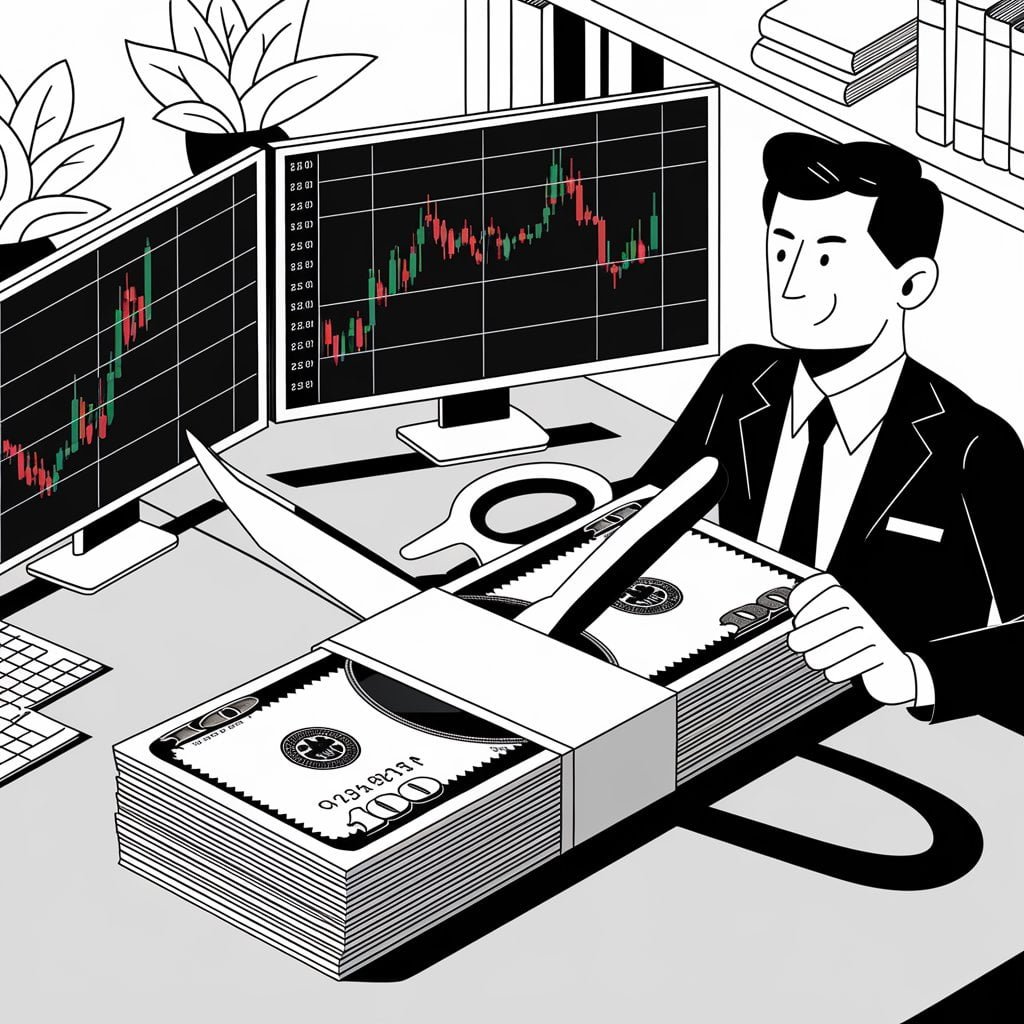Leverage 101: What Every Day Trader Needs to Know

Click Here To Save Time
Time Saver
Leverage can amplify both profits and losses, making it a powerful but risky tool in day trading.
Successful traders use leverage wisely, setting strict limits and employing risk management strategies.
Real-world examples highlight the potential gains and dangers of using leverage in volatile markets.
Understanding how leverage works is essential to avoid significant losses that can exceed your initial investment.
Leverage should be approached with caution, especially for beginners who are still learning the nuances of day trading.
Effective use of leverage involves staying informed, diversifying trades, and understanding your broker’s policies.
Introduction
Imagine you’re on the edge of a cliff, with two options before you. One path is a slow, safe descent, while the other involves using a powerful hang glider that could either give you a thrilling ride or send you crashing.
This scenario mirrors the concept of leverage in day trading—a tool that can skyrocket your profits or deepen your losses.
Leverage is a critical element in day trading, allowing traders to control larger positions with a relatively small amount of capital. While this can lead to increased profits, it also heightens the risk of losses that could exceed your initial investment.
This article will explore how leverage works, its benefits, and the risks involved, using real-life examples to illustrate these points.
The Power of Leverage: A Strong Ally in Day Trading
Leverage is like a helpful friend who offers you a boost when you need it most. In day trading, it allows you to borrow money from your broker to increase the size of your trades.
For example, if you have $1,000 in your account and use a 10:1 leverage ratio, you can trade as if you have $10,000. This means even small price changes can lead to significant profits.
Example: Jane’s Success with Leverage
Consider Jane, a skilled day trader who uses technical analysis to guide her trades. She notices a tech stock gaining momentum and decides to use leverage to maximize her potential earnings.
With $5,000 in her account and a leverage ratio of 20:1, Jane controls a $100,000 position. The stock increases by 2% during the day, resulting in a $2,000 profit—far more than she could have earned without leverage.
Jane’s story shows how leverage can be a powerful tool when used correctly. However, not all stories end this way.
The Dark Side of Leverage: When Things Go Wrong

Leverage is not without its risks. The same force that can amplify your profits can also magnify your losses. In volatile markets, where prices can change rapidly, leverage can lead to significant financial losses.
Case Study: Mike’s Costly Mistake
Mike, unlike Jane, takes excessive risks without fully understanding the implications. He uses 50:1 leverage to trade a volatile currency pair, with $2,000 in his account controlling a $100,000 position. Unfortunately, the market moves against him, and a 2% drop results in a $2,000 loss, wiping out his entire account.
Mike’s experience serves as a cautionary tale, highlighting the dangers of misusing leverage. It’s a reminder that while leverage can boost profits, it can also lead to devastating losses if not handled with care.
Balancing Act: Managing Leverage Wisely
To use leverage successfully, it’s crucial to manage the risks involved. This means setting limits on the amount of leverage you use, employing risk management strategies like stop-loss orders, and being prepared to act quickly if the market turns against you.
Leverage as a Cautious Guide
Think of leverage as a guide who can lead you to great opportunities, but only if you follow their advice carefully. Rushing ahead without caution can result in significant losses.
In day trading, leverage can lead to impressive gains, but only if used responsibly.
Smart Strategies for Using Leverage
1. Start Small: If you’re new to day trading or using leverage, begin with small amounts to understand how it impacts your trades. Gradually increase as you gain experience.
2. Set Stop-Loss Orders: This tool helps manage risks by automatically closing your position if the market moves against you, preventing excessive losses.
3. Diversify Your Trades: Spread your investments across multiple trades to reduce the risk of a single bad trade wiping out your account.
4. Stay Informed: Markets are constantly changing. Keep up with trends, news, and events that could affect your trades.
5. Know Your Broker’s Policies: Different brokers offer different levels of leverage and have various rules on margin calls. Understand these policies to avoid surprises.
Conclusion: Leveraging Success in Day Trading
Leverage is a powerful tool in day trading, capable of magnifying both profits and losses. While it offers the potential for significant gains, it also comes with substantial risks. The key to success lies in understanding how leverage works, respecting its power, and using it wisely.
The stories of Jane and Mike illustrate the two sides of leverage: one of cautious success and the other of costly mistakes.
By managing leverage responsibly, setting limits, and employing sound risk management strategies, you can harness its potential while avoiding its pitfalls.
Remember, leverage can be a friend that helps you reach new heights, but only if you treat it with the caution it deserves.
Click Here For Our Sources
Sources
Investopedia – https://www.investopedia.com/terms/l/leverage.asp
The Balance – https://www.thebalance.com/leverage-and-day-trading-10308653.
NerdWallet – https://www.nerdwallet.com/article/investing/leverage
Fidelity –https://www.fidelity.com/learning-center/investment-products/margin/understanding-margin
Trading 212 – https://www.trading212.com/en/the-dangers-of-leverage
Leave a Reply
You must be logged in to post a comment.